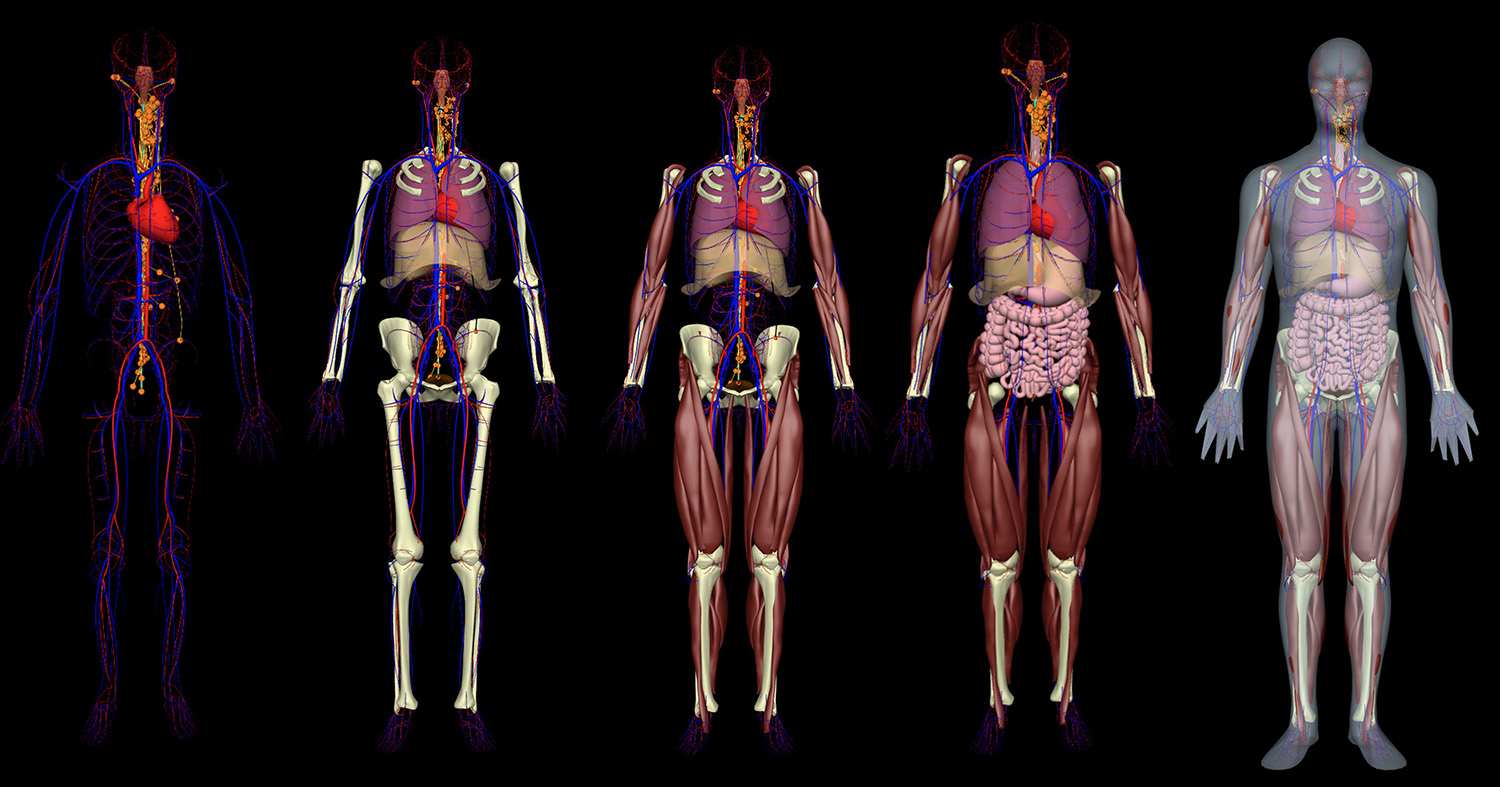Digital twins in healthcare: a collaboration between New Zealand and Europe
On this page

A 'digital twin' with more anatomical detail added from left to right.
VITAL, a groundbreaking Horizon Europe project with a Kiwi connection, has set its sights on revolutionising the diagnosis and treatment of cardiovascular diseases. The project’s ultimate goal is to contribute to a worldwide shift towards personalised medicine, embodied in the concept of 'digital twins' – virtual models that are continuously updated with real-time patient data.
Distinguished Professor Sir Peter Hunter is Principal Investigator for New Zealand’s contribution. He leads a team of five from the University of Auckland’s Auckland Bioengineering Institute (ABI) who play a crucial role.
Sir Peter says the project, which is among the first[1] to be funded under New Zealand’s association to Horizon Europe Pillar 2, aims “to use computational modelling in physiology to help with the diagnosis and treatment of certain cardiovascular diseases such as heart failure and hypertension”.
“If we can demonstrate clinically useful applications of the models in these particular cardiovascular diseases, the door will be open to using computational modelling in a much wider range of clinical conditions,” he says.
“This can be seen as part of a drive to create a virtual human model which, when coupled with ongoing measurements from an individual, gives a digital twin, which I think will be part of the future of healthcare globally.”
Computational modelling of physiology is a process that uses computer models based on physics, chemistry, and mathematics to study the physiological mechanisms within our bodies. The technology aims to predict disease progression and treatment outcomes over months to years from clinically obtained data and wearable technology.
The ABI is providing the multiscale computational modelling infrastructure for the project. This infrastructure, initially developed under the 12 Labours project funded through the MBIE-administered Catalyst: Strategic fund[2], forms the backbone of VITAL’s physics-based mechanistic modelling capabilities.
Sir Peter and his team were invited to join the consortium for VITAL as the project’s European partners had heard about this work.
“I’d like to give kudos to the team at MBIE that had the foresight to fund the 12 Labours project. That has given us the ability to be world leading in the development of virtual human models,” he says.
Participating in the project alongside peers from Belgium, the Netherlands, Poland, Italy, France, Austria, Spain, Switzerland and the UK, not only helps with further development of these models but also provides access to clinical data that is much more comprehensive than that available in New Zealand.
"The interaction with our talented European colleagues is exciting, especially for our postdocs and PhD students," Hunter says, emphasising the project’s potential to improve healthcare through 'virtual human' models that are patient-specific.
These models could help improve treatment strategies by predicting outcomes for individual patients.
But the work is not without its challenges – primarily in the need to setup models with enough individual patient data to ensure accurate predictions. This will require the development of new instrumentation for precise measurements.
New Zealand’s participation in Horizon Europe offers not only crucial research funding but also the opportunity to engage with international science.
Reflecting on his team’s experience, Sir Peter advises fellow New Zealand researchers interested in participating in Horizon Europe to cultivate relationships with European peers. "If your expertise complements European groups, you are pushing on an open door”.
“New Zealand’s association to Horizon Europe is hugely important,” Sir Peter concludes. “It brings us a step closer to implementing the virtual human twin concept and will also help provide European-NZ connections for spinout companies that result from the research.”
That’s exciting for the future of healthcare and science in New Zealand and abroad.
Find out more about New Zealand’s association to Horizon Europe
Visit the VITAL website for more on this project’s work(external link) — Vital
Footnotes
[1] Successful Horizon Europe Pillar 2 projects with New Zealand partners
[2] Catalyst: Strategic – Auckland Bioengineering Institute 12 Labours project

